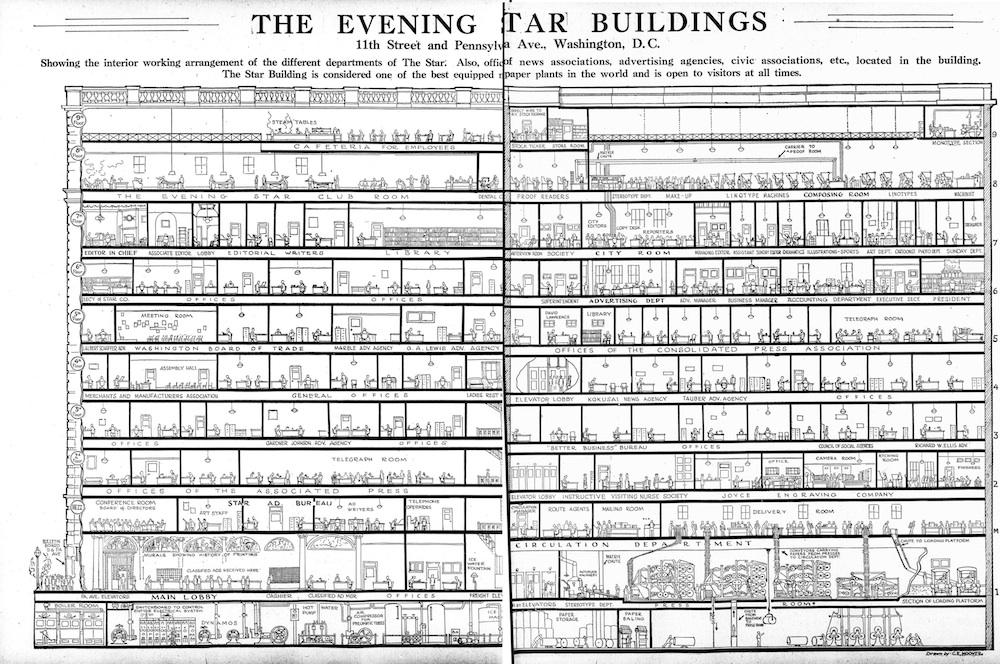The Vault is Slate’s history blog. Like us on Facebook, follow us on Twitter @slatevault, and find us on Tumblr. Find out more about what this space is all about here.
In this cutaway drawing of the interior of the Washington Evening Star’s building, printed in that paper in 1922, the physical layout of the paper’s office is visible to the reader, with editorial offices, technical plant, and employee resources (library, a top-floor cafeteria) all included. The Star’s building also housed several outside agencies, and their offices are shown, as well.
Cutaway drawings, historian Eugene Ferguson writes, were inventions of the Renaissance, allowing technical artists to clarify mechanical processes by “letting the reader look through an obstruction by assuming it to be transparent.” In the first half of the 20th century, the cutaway view came to be used in popular media as an explanatory device: encyclopedias, children’s books, advertising. This type of drawing catered to a contemporary interest in knowing everything about the workings of industry, and the Evening Star cutaway offered that kind of omniscient peek into the making of a newspaper.
The Evening Star was published from 1852 through 1981, sometimes assuming alternate titles (Washington Star-News, the Washington Star). It had its greatest successes in the mid-20th century, attracting advertising revenue and Pulitzers (10 between 1944 and 1981). The blog Ghosts of DC, which posted the cutaway drawing earlier this month, also included a photograph of the exterior of the Evening Star’s Beaux Arts building, which still stands at 1101 Pennsylvania Avenue.
Click on the image to reach a zoomable version.

Courtesy Ghosts of DC.